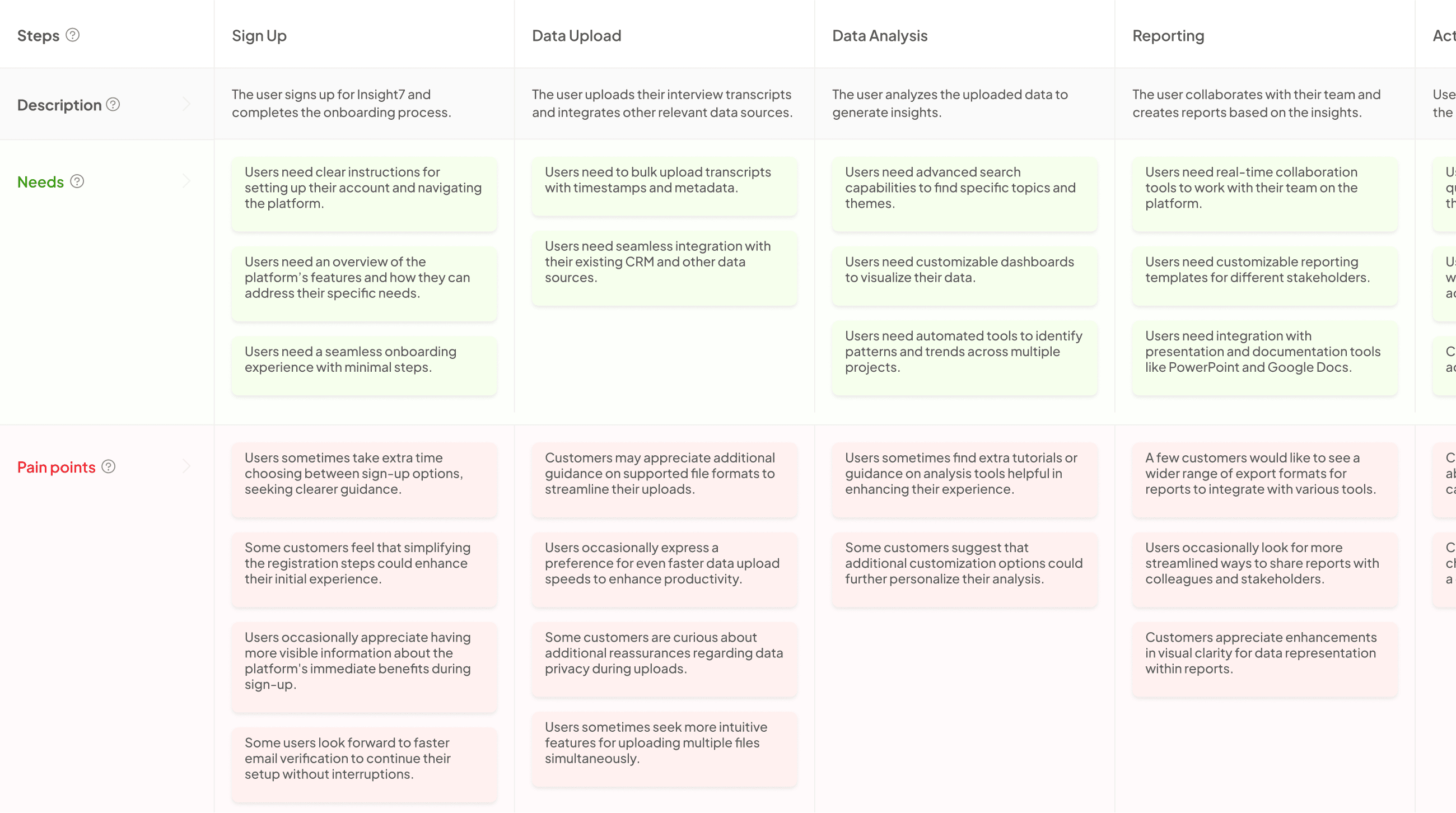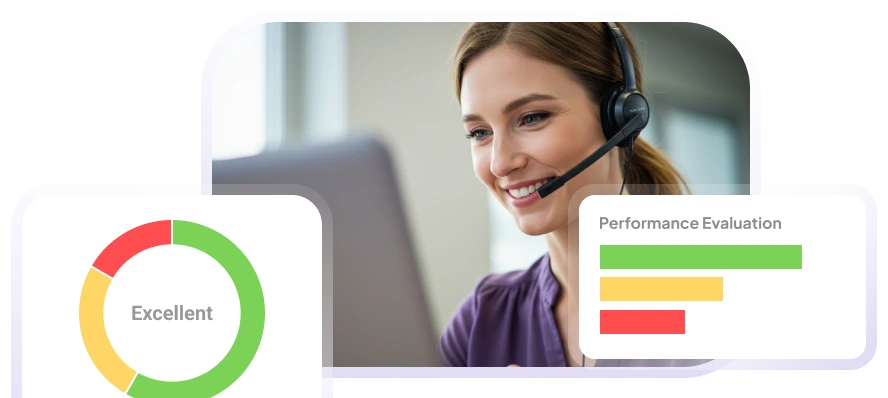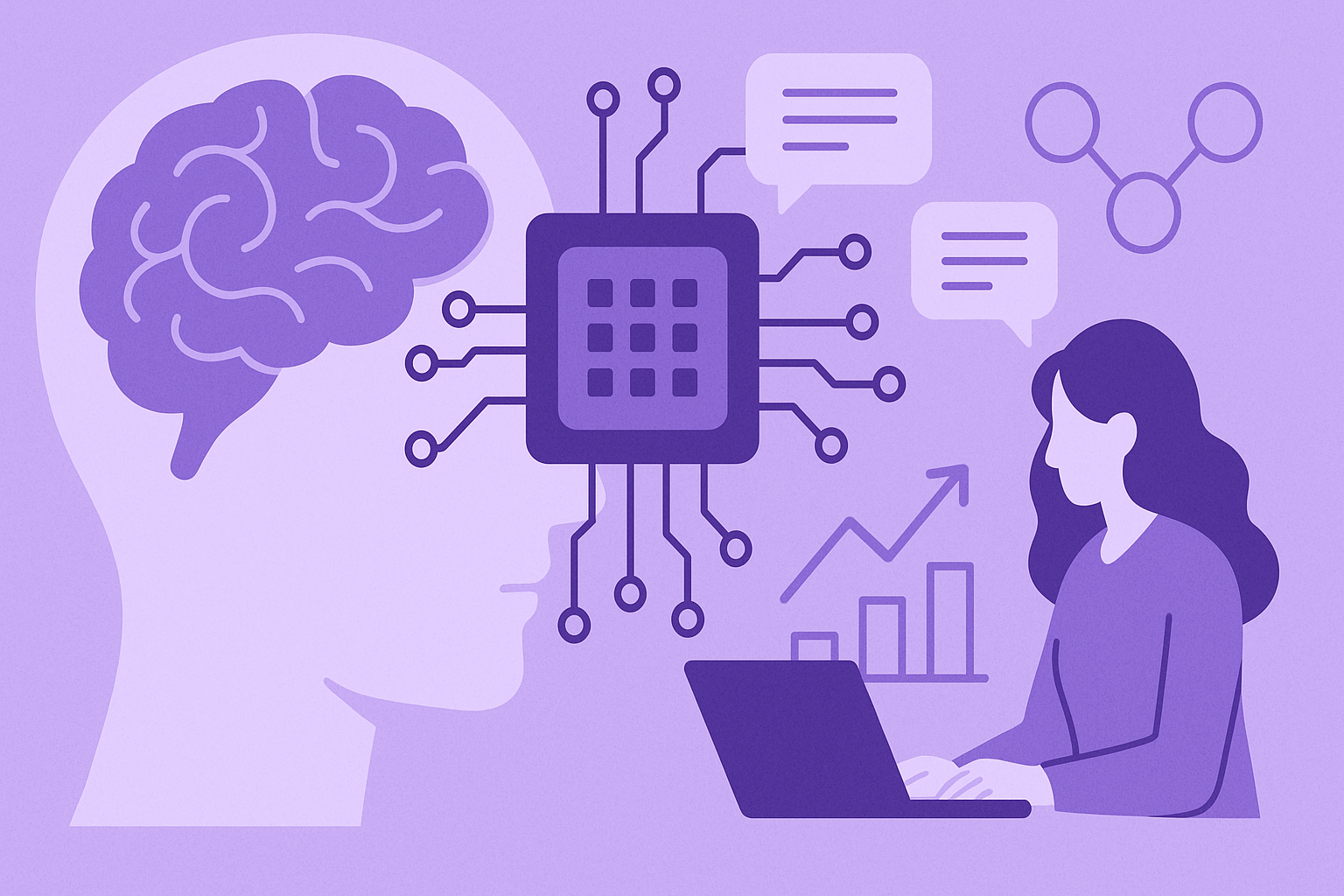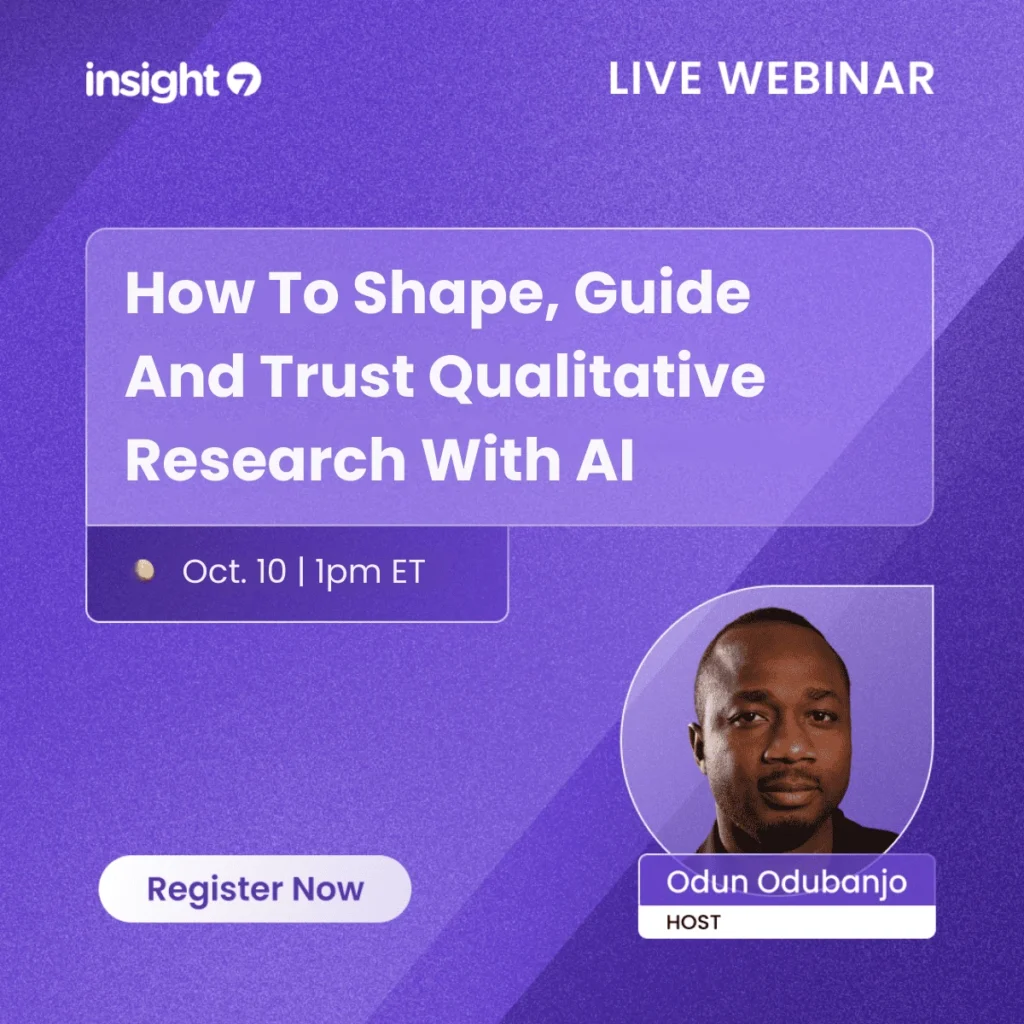AI Agents for Predictive Behavioral Insights in Retail
-
Bella Williams
- 10 min read
Predictive Retail Insights play a pivotal role in shaping modern retail strategies by utilizing advanced AI agents. As consumers increasingly expect personalized experiences, retailers who harness such insights can anticipate needs and preferences effectively. This growing reliance on data analysis empowers businesses to refine their offerings and enhance customer satisfaction.
AI agents facilitate the extraction of meaningful patterns from vast datasets, enabling retailers to make informed decisions. By analyzing customer behavior, trends, and market demands, these agents not only optimize inventory management but also help tailor marketing campaigns. As the retail landscape evolves, embracing Predictive Retail Insights becomes essential for sustained growth and competitive advantage.
Extract insights from Customer & Employee Interviews. At Scale.

Harnessing AI for Predictive Behavioral Insights
In harnessing AI for predictive behavioral insights, retailers can significantly enhance their understanding of consumer behavior. AI algorithms analyze vast arrays of data to uncover patterns and trends that inform decision-making. By processing customer interactions across multiple touchpoints, AI identifies key behavioral shifts and preferences, allowing retailers to respond proactively.
This process not only aids in personalizing the shopping experience but also optimizes inventory management. When predictive retail insights are harnessed effectively, retailers can anticipate demand fluctuations, thereby reducing excess stock and improving sales efficiency. Furthermore, AI-generated insights can help tailor marketing strategies to specific customer segments, enhancing engagement and loyalty. By incorporating these technologies, retail businesses are better equipped to meet evolving consumer expectations while driving growth and profitability.
Ultimately, embracing AI-powered insights means transforming retail strategies into data-driven actions that resonate with today’s informed customers.
Understanding Predictive Retail Insights and Their Impact
Predictive Retail Insights are crucial for modern retail strategies as they allow businesses to anticipate customer behaviors and preferences. By harnessing data analytics and AI, retailers gain a clearer understanding of shopping trends and consumer sentiment. This predictive approach not only enhances customer satisfaction but also drives sales growth by enabling brands to align their offerings with market demand effectively.
AI agents play a transformative role in obtaining these insights. They analyze vast amounts of data, extracting patterns that inform decision-making and strategy development. For instance, through advanced analytics, retailers can individualize shopping experiences, ensuring that promotions and product suggestions resonate with the consumer's unique preferences. Consequently, the impact of Predictive Retail Insights leads to improved inventory management and a proactive approach to market changes, ultimately sustaining a competitive edge in a rapidly evolving retail landscape.
- Definition and significance of Predictive Retail Insights.
Predictive Retail Insights are analytical tools that empower retailers to anticipate customer behavior and market trends. By utilizing vast datasets and AI algorithms, retailers can understand purchasing patterns, preferences, and potential future behaviors. This insights-driven approach allows businesses to make informed decisions, such as optimizing inventory management and enhancing customer experiences through tailored strategies.
The significance of Predictive Retail Insights lies in their ability to transform retail operations significantly. These insights enable businesses to proactively address customer needs, improve marketing effectiveness, and refine product offerings. Moreover, they enhance the overall customer experience by ensuring that shoppers receive personalized interactions. Ultimately, by integrating predictive insights into their strategies, retailers can stay ahead in a competitive marketplace, maximizing both customer satisfaction and sales performance.
- How AI agents transform retail strategies.
AI agents are revolutionizing retail strategies by providing Predictive Retail Insights that enhance decision-making processes. With sophisticated algorithms, these agents analyze vast quantities of consumer data, identifying patterns and trends that inform marketing and inventory strategies. This ability allows retailers to anticipate customer needs and tailor their offerings, ensuring products are always aligned with demand.
Moreover, AI agents can optimize resource allocation, streamline supply chains, and improve customer experiences. By integrating these insights, retailers can transform operational practices, leading to increased efficiency and customer satisfaction. As businesses leverage these insights, they can adapt quickly to market changes, fostering greater agility in their strategies. Ultimately, the use of AI in retail isn’t just about staying competitive; it's about reshaping the entire shopping experience into something personalized and intuitive. Through these predictive capabilities, businesses can not only meet but exceed customer expectations, cultivating long-term loyalty and success.
Applications of AI-Driven Predictive Insights in Retail
AI-driven predictive insights in retail have revolutionized how businesses engage with customers and manage operations. These insights facilitate personalized shopping experiences by understanding customer preferences and behaviors. Retailers can analyze vast amounts of data, allowing them to make recommendations tailored to individual shoppers, which enhances customer satisfaction and loyalty.
Additionally, predictive retail insights play a critical role in inventory management. By utilizing advanced algorithms, businesses can anticipate demand, optimize stock levels, and reduce instances of overstock or stockouts. This not only leads to cost savings but also boosts operational efficiency. As retailers increasingly adopt these technologies, they can better adapt to market trends and consumer needs, paving the way for more strategic decision-making in the retail landscape.
In summary, the applications of predictive retail insights significantly elevate customer experiences and operational effectiveness, proving to be indispensable in today's retail environment.
- Personalization of shopping experiences.
Personalization of shopping experiences is a cornerstone of modern retail, driven significantly by Predictive Retail Insights. This innovative approach enables retailers to tailor their offerings to individual customer preferences, enhancing the overall shopping experience. When AI agents analyze consumer behavior, they can predict shopping patterns, personalizing product suggestions and promotional offers. This not only fosters customer loyalty but also drives conversion rates as shoppers feel more understood and valued.
Data plays a critical role in this personalization process. Firstly, understanding demographic data allows businesses to categorize customers and predict their needs effectively. Next, behavioral data reveals patterns in buying habits, helping retailers anticipate future purchases. Lastly, sentiment analysis of customer feedback provides deep insights into buyer satisfaction, enabling further enhancements in service delivery. Together, these elements create a dynamic shopping experience uniquely tailored to individual consumers, affirming the vital role of Predictive Retail Insights in modern retail practices.
- Inventory management through predictive algorithms.
Effective inventory management is crucial for retail success, and predictive algorithms play a vital role in optimizing this process. By analyzing historical data and current trends, these algorithms forecast demand and inventory needs, enabling retailers to avoid stockouts and overstock situations. This proactive approach empowers businesses to maintain an optimal inventory level while enhancing cash flow and reducing waste.
The integration of predictive retail insights helps in refining inventory strategies. Retailers can establish better relationships with suppliers, align their purchasing strategies, and adjust reorder points based on predictive analytics. Moreover, algorithms can identify slower-moving items and suggest markdowns or promotions, ensuring that products are sold timely. Overall, harnessing predictive algorithms not only streamlines inventory management but also significantly boosts customer satisfaction through improved product availability.
Generate Journey maps, Mind maps, Bar charts and more from your data in Minutes
Top Tools for Predictive Retail Insights
In today's retail landscape, employing the right tools for Predictive Retail Insights can set businesses apart. Various platforms enable retailers to analyze customer behavior deeply, allowing for timely decision-making. One such tool is Insight7, which provides a user-friendly interface for analyzing data at scale. This platform focuses on customer conversations and transforms them into actionable insights, meeting the growing demand for effective data analysis.
Beyond Insight7, several other tools can significantly enhance predictive analytics. For instance, IBM Watson offers deep retail analytics, utilizing AI to generate powerful insights. Salesforce Einstein integrates seamlessly with customer relationship management to predict behavior and trends. SAS Retail Analytics is another comprehensive solution that enables retailers to harness analytics effectively. On the technology front, Amazon Forecast utilizes machine learning for accurate demand forecasting, while H2O.ai provides open-source capabilities for deriving predictive insights. By leveraging these tools, retailers can stay ahead of the competition and foster a more personalized shopping experience.
insight7
Insight7 specializes in delivering advanced predictive retail insights through innovative AI technology. By analyzing vast amounts of data from customer interactions, businesses can better understand consumer behavior and preferences. This capability allows retailers to make informed decisions that align with market trends and customer expectations.
The potential of predictive retail insights is evident in several key areas. First, enhanced personalization in shopping experiences enables retailers to cater to individual preferences, increasing customer satisfaction. Second, effective inventory management fueled by predictive algorithms translates to optimized stock levels, minimizing waste and maximizing sales opportunities. Lastly, timely data analysis ensures businesses remain competitive, allowing them to adapt quickly to emerging patterns in consumer behavior. As retail continues to evolve, harnessing AI-driven insights will be crucial for success and growth.
- Overview and key features of insight7 in predictive analytics.
The platform offers a comprehensive solution for generating Predictive Retail Insights with ease and accessibility. Users can initiate processes directly from the homepage, making it a highly user-friendly experience. This approach encourages everyone to utilize the platform without needing specialized training or expertise. Key features within the platform allow for seamless categorization and analysis of customer interactions, enhancing the understanding of shopping behaviors.
One prominent feature is the ability to aggregate multiple data sources, providing a holistic view of consumer behavior. Users can review transcripts, identify pain points, and extract actionable insights effortlessly. This feature also includes visual aids to depict trends and behaviors, which further aids decision-making. By democratizing access to vital insights, the platform empowers retail businesses to tailor their strategies effectively, thus driving improved customer experiences and ultimately boosting retail performance.
Additional Tools for Enhanced Retail Insights
In the quest for enhanced retail insights, several tools stand out, each offering unique capabilities. First, IBM Watson provides deep analytics, delivering valuable understanding of customer behavior and trends. This tool's robust AI capabilities allow retailers to make data-driven decisions that refine their strategies.
Next, Salesforce Einstein excels in integrating customer behavior predictions into sales processes. With predictive insights at their fingertips, retailers can personalize experiences, tailoring efforts to meet emerging customer needs. Similarly, SAS Retail Analytics stands out by providing comprehensive solutions that not only predict but also optimize various aspects of retail operations.
Amazon Forecast plays a crucial role, utilizing machine learning to project demand accurately. This helps retailers manage inventory effectively, minimizing shortages and overstock situations. Lastly, H2O.ai offers an open-source platform for predictive insights, empowering organizations to analyze data efficiently and innovate continuously. Together, these tools create a sophisticated ecosystem for achieving predictive retail insights that drive business success.
- IBM Watson – Leveraging AI for deep retail analytics.
Artificial intelligence plays a transformative role in extracting predictive retail insights, particularly through advanced analytics. By analyzing vast amounts of data, AI allows retailers to uncover hidden patterns that inform business strategies. Retailers can harness this technology to predict consumer behavior with remarkable accuracy, adapting their offerings to meet market demands more effectively.
One significant method for enhancing retail analytics involves using AI-powered tools to process customer feedback and sales data. This analysis reveals critical insights about consumer preferences and trends. Retailers can compare data from different locations, identifying variations in customer sentiment and behavior. Consequently, adopting such an analytical approach not only improves inventory management but also personalizes shopping experiences. By investing in these AI-driven insights, retailers position themselves to respond dynamically to changing market conditions and elevate their competitive edge.
- Salesforce Einstein – Integrating AI for customer behavior prediction.
Salesforce Einstein redefines how businesses predict customer behavior by integrating advanced AI technologies. This approach enables organizations to understand customer preferences deeply and adapt strategies accordingly. By analyzing vast amounts of data quickly, this tool provides actionable insights that retailers can use to tailor marketing campaigns and enhance customer engagement.
The integration of AI-driven predictive capabilities allows businesses to anticipate purchasing patterns and adjust inventory management effectively. This proactive stance not only improves customer satisfaction but also drives sales growth. Retailers using predictive retail insights can optimize their operations, ensuring they meet customer demands while minimizing excess stock. By understanding the nuances of customer behavior through predictive analytics, businesses are well-equipped to stay ahead in a competitive landscape.
- SAS Retail Analytics – Comprehensive predictive solutions for retail.
Predictive Retail Insights are essential for modern retailers aiming to thrive in a competitive environment. Advanced analytics empower businesses to predict customer behavior, streamline operations, and enhance decision-making. This section focuses on comprehensive predictive solutions designed specifically for retail, enabling organizations to effectively harness data analytics.
Successful implementation of these predictive solutions involves several key components. Firstly, data integration allows retailers to combine information from various sources, offering a holistic view of customer interactions and market trends. Secondly, predictive algorithms analyze historical data to forecast future demand patterns, which aids in inventory management and marketing strategies. Finally, visual analytics tools help retailers understand complex data and make informed decisions in real-time. By embracing these comprehensive predictive solutions, retailers can enhance customer experiences, optimize operations, and drive sustained growth in an ever-evolving market.
- Amazon Forecast – Utilizing machine learning for demand forecasting.
Utilizing machine learning for demand forecasting represents a pivotal shift in generating Predictive Retail Insights. By harnessing vast amounts of historical data, these innovative systems can analyze patterns, predict future demand, and inform inventory management decisions. Retailers can anticipate customer needs more accurately, ensuring they stock the right products at the right time.
To effectively leverage machine learning for accurate forecasting, several key aspects should be considered. First, the input data quality is essential; accurate forecasts stem from robust and relevant datasets. Next, algorithms must be continuously refined, assessing their predictive accuracy over time. Lastly, integration with existing operational systems allows for seamless execution of forecasts into supply chain processes. Together, these factors enable retailers to optimize operations, reduce waste, and improve overall customer satisfaction while achieving significant cost savings. The result is a smarter approach to retail, enhancing decision-making capabilities through advanced data-driven insights.
- H2O.ai – Open-source AI for predictive insights.
Open-source AI offers an invaluable resource for businesses seeking predictive retail insights. This technology democratizes access, allowing various team members to analyze and visualize data without needing extensive training. It simplifies the process of transforming voice data from customer interactions into actionable insights, greatly enhancing customer experience management.
The platform streamlines work by organizing files where insights from customer calls can be extracted. Users can easily identify themes, pain points, and behaviors that shape customer experiences. The capability to summarize large datasets helps businesses target specific customer needs, enabling informed decision-making. Overall, this tool empowers organizations to harness data effectively, providing tailored insights that can refine retail strategies and improve overall performance.
With this innovative approach, businesses can not only predict customer behaviors but also adapt their strategies in real-time to align with those insights.
Conclusion: Future of Retail with AI-Driven Predictive Insights
The future of retail is being significantly reshaped by AI-driven predictive insights, which enable businesses to anticipate customer behavior with remarkable accuracy. As retailers embrace these innovations, they will unlock opportunities to enhance customer engagement and optimize operational efficiency. Predictive retail insights provide a roadmap for tailoring offerings to meet consumer demands, creating more personalized experiences that foster loyalty.
Additionally, the ongoing integration of AI technologies will empower retailers to make data-driven decisions that mitigate risks and streamline inventory management. By leveraging sophisticated analytics, businesses can navigate market complexities more effectively and stay ahead of trends. This evolution marks a pivotal shift towards a smarter, more responsive retail environment.







